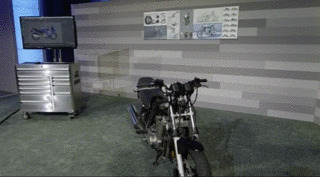HoloLens Release "Within The Next Year" For Devs
Microsoft's HoloLens head-worn augmented reality computer is expected to begin shipping within the next year, though consumers will still be left waiting. The unusual headset, which overlays digital graphics on top of the real world, allowing them to be virtually manipulated as if sharing the space of the wearer, will initially be targeted at developers and enterprise users. According to comments by Microsoft CEO Satya Nadella, meanwhile, the consumer device journey may take considerably longer.
Speaking to the BBC, Nadella confirmed that version one of HoloLens is targeted "more around developers and enterprises" than consumers. That's despite high-profile demonstrations of things like Minecraft for HoloLens, in which the game's blocks appeared to occupy real spaces around the player.
Instead, it's applications like those shown off by Autodesk recently that are more likely to pave HoloLens' way into businesses.

For instance, Autodesk showed how a motorbike design project could combine a physically-present framework with a selection of computer-generated bodywork. Meanwhile different participants on the project could each interact from different locations, with the wearable showing what they were paying attention to and logging different changes, comments, and decisions.
As for individual users, Nadella suggests that HoloLens is "a five year journey" which indicates a longer wait for home versions. That would give Windows 10 and "Holographic Computing" in general time to mature, since while any app for the OS can be modified – with relative ease, Microsoft insists – to run on the headset, they'll still need careful planning to make the most of the augmented reality aspect.
It'll also potentially allow for advancements in hardware to take place, particularly in addressing what now is HoloLens' biggest limitation: its field of view.
As we found when we tested the current developer device, though HoloLens does a convincing job of blending the real and the virtual, it can only do so in a small portion of the wearer's view. Changing that is going to require better transparent displays, which may take a little time to deliver.
VIA The Verge
SOURCE BBC
